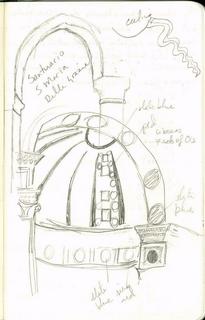
Today I was browsing the Tate Online Collection with their "Carousel" and I found Gwen John. Born in 1876, she was the sister of the famouser (ha!) painter Augustus John and became Rodin's mistress as well as a friend of Rilke. She never received the recognition her brother had, and was always struggling despite her obvious talent. She died in 1939. Most of her paintings at the Tate are portraits--very quiet, careful portrayals of women. Click here to see all of the ones at Tate. The one shown here is Chloe Boughton-Leigh, one of my favorites.









